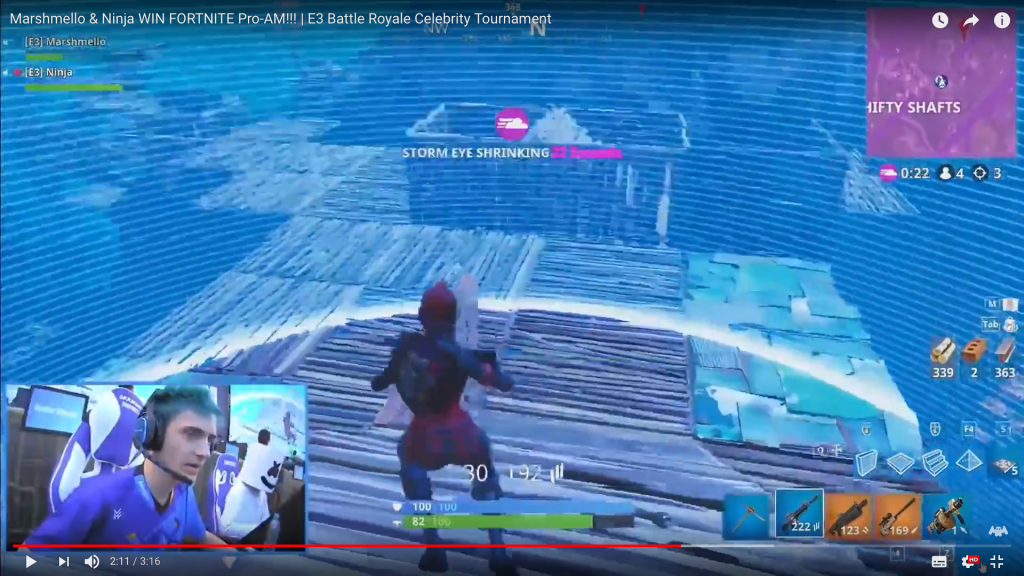
Unless you are a dedicated gamer or have kids under a certain age, then Epic Games’ Fortnite is probably something you only have passing knowledge of, perhaps from hysterical media coverage about its potential threat to The Youth Of Today. In short, it is a “co-op survival” game, where players can team up against opponents in a near-future world where most humans have been wiped out and zombie hordes are intent on obliterating the few remaining survivors.
It was a slow burner on launch, but in September 2017 a standalone version was made freely available on PC as well as Xbox and PlayStation. Then it exploded.
As Twitch and Pokémon Go have shown, as soon as there is a gaming hype, pop stars scrambling onto the bandwagon are never far behind. Drake (of course) has already hitched his deft self-promotional wagon to the game and earlier this month EDM star Marshmello took part in a “proam” Fortnite tournament in LA where he was paired with Ninja, a huge gaming star on Twitch and YouTuber (where he has 14.1m subscribers).
Ninja (real name Tyler Blevin) and Marshmello (real name Christopher Comstock) stole the show and landed the $1m top prize, which went to charity. Across the three hours they played, Twitch reportedly had 1m concurrent viewers watching every move. The two had already played Duos together on YouTube (current views: 9m) so this was an inevitability.
Obviously Marshmello can draw EDM fans into the game but, really, this was more about reflected glory for him. As far as the youth gaming community is concerned, Ninja is the superstar in this pairing and many might be left scratching their heads trying to figure out who this guy with the bucket on his head is.
At the peak of the Rock Band/Guitar Hero franchises, music (mainly older acts) were the big draw. But in the live-streamed gaming world, the gamers are the rock stars. Artists jumping on board are smart to do so, but they’ll be smarter still if they understand and accept where in the pecking order they really sit.